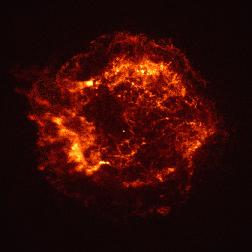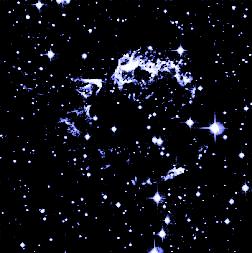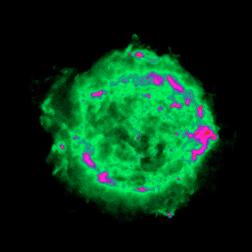





Th X-ray image on the left, taken by NASA's Chandra satellite, shows an expanding shell of hot gas produced by the explosion. This gaseous shell is about 10 light years in diameter, and has a temperature of about 50 million degrees. X-ray spectra taken with Chandra show that the bright filaments are dominated by elements heavier than Helium, presumably created in the interior of the massive star that exploded 300 years ago.
In optical wavelengths (center image), Cassiopeia A and other young supernova remnants are relatively faint and hard to identify.
The radio image (right) is similar to the X-ray image: an expanding shell of gas. The radio emission is created by electrons accelerated to relativistic velocites in the vicinity of a shock front (synchrotron emission).